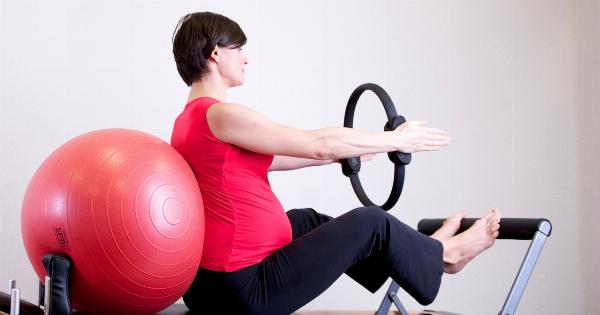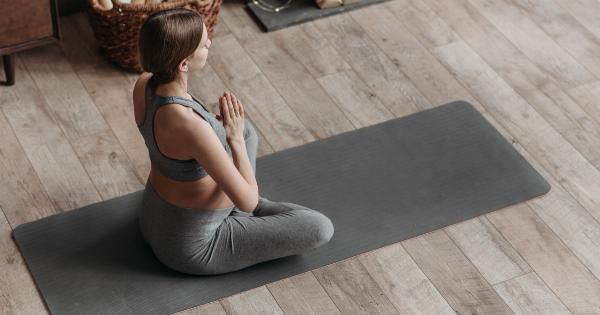During pregnancy, it is essential to take care of both the physical and mental well-being of the mother.
Engaging in regular exercise has numerous benefits for the pregnant woman, and pre-natal gymnastics is an excellent form of exercise specifically tailored to meet the needs of expectant mothers.
The Benefits of Pre-Natal Gymnastics
1. Enhances cardiovascular health: Engaging in pre-natal gymnastics helps improve heart health, reducing the risk of gestational hypertension and other cardiovascular complications.
2. Boosts mood and reduces stress: Regular exercise releases endorphins, which are known as “feel-good” hormones. This helps pregnant women combat mood swings and reduce stress levels.
3. Supports weight management: Pre-natal gymnastics can help maintain a healthy weight during pregnancy, preventing excessive weight gain and reducing the risk of complications.
4. Improves muscle strength and endurance: Strengthening exercises as part of pre-natal gymnastics help improve muscle tone and endurance, which are crucial during labor and delivery.
5. Promotes better sleep: Pregnant women often face difficulties with sleep due to discomfort. Regular exercise helps tire the body, promoting better sleep patterns.
6. Reduces pregnancy discomfort: Pre-natal gymnastics exercises are specifically designed to alleviate common discomforts such as back pain, leg cramps, and swelling.
7. Prepares the body for childbirth: By strengthening the pelvic floor muscles and improving overall flexibility and stamina, pre-natal gymnastics equips the body for the challenges of labor and delivery.
8. Facilitates postpartum recovery: Engaging in pre-natal gymnastics can help facilitate a faster postpartum recovery by maintaining strength and flexibility throughout pregnancy.
9. Improves posture and balance: As the pregnancy progresses, the center of gravity shifts, leading to changes in balance and posture. Pre-natal gymnastics focuses on exercises that promote better alignment and balance.
10. Bonding opportunity: Many pre-natal gymnastics classes provide a supportive and social environment where expectant mothers can connect with others going through a similar experience, fostering a sense of community and camaraderie.
Safe Practices and Considerations
While pre-natal gymnastics offers numerous benefits, it is important to ensure safety during exercise. Here are some key considerations:.
1. Consult with a healthcare provider: Before engaging in any exercise program during pregnancy, it is crucial to consult with a healthcare provider to ensure there are no contraindications.
2. Choose specialized pre-natal gymnastics classes: Opt for exercise programs specifically designed for pregnant women. These classes are led by trained professionals who understand the unique needs and limitations of expectant mothers.
3. Listen to your body: Pay attention to your body’s signals and modify or stop exercises if they cause any discomfort, pain, dizziness, or shortness of breath.
4. Stay hydrated: Drink plenty of water before, during, and after exercise to stay adequately hydrated.
5. Wear comfortable attire: Choose comfortable, breathable clothing and supportive footwear to ensure ease of movement and prevent any injuries.
6. Avoid high impact exercises: As the pregnancy progresses, it is advisable to avoid exercises or activities that involve jumping, sudden changes in direction, or high impact movements.
7. Pay attention to the environment: Exercise in a well-ventilated space, and ensure the temperature is appropriate to prevent overheating.
8. Practice proper warm-up and cool-down: Prioritize warm-up exercises to prepare the body for activity and finish each session with gentle stretches to promote flexibility and prevent muscle soreness.
Pre-Natal Gymnastics Exercises
Pre-natal gymnastics exercises can vary depending on the individual’s fitness level, stage of pregnancy, and any specific considerations advised by the healthcare provider. However, here are some generally safe exercises:.
1. Kegel exercises: These exercises involve contracting and releasing the pelvic floor muscles and help strengthen the pelvic floor, improving bladder control and supporting the uterus.
2. Squats: Squats help strengthen the lower body, including the glutes, quadriceps, and calves. To perform a squat, stand with your feet shoulder-width apart and slowly lower into a sitting position while keeping your back straight.
3. Pelvic tilts: Pelvic tilts help relieve back pain and improve posture. Stand against a wall with your back touching it. Gradually press the lower back against the wall by tilting the pelvis forward and hold for a few seconds before releasing.
4. Swimming: Swimming is a low-impact exercise that provides a full-body workout while minimizing stress on the joints. It also helps alleviate swelling and improves circulation.
5. Prenatal yoga: Prenatal yoga focuses on gentle stretching, breathing techniques, and meditation. It helps improve flexibility, promote relaxation, and strengthen the body.
6. Modified push-ups: Performing push-ups against a wall or on elevated surfaces, such as a table or countertop, can help strengthen the upper body without putting excessive pressure on the abdominal area.
7. Low-impact aerobics: Low-impact aerobic exercises, such as brisk walking or using an elliptical machine, provide cardiovascular benefits without placing stress on the joints.
When to Avoid Pre-Natal Gymnastics
While pre-natal gymnastics can be highly beneficial, there are situations in which it is advisable to avoid or modify exercise routines:.
1. High-risk pregnancy: If you have been classified as having a high-risk pregnancy, it is important to follow the advice of your healthcare provider regarding exercise.
2. Pregnancy complications: If you have experienced complications such as placenta previa, preeclampsia, or preterm labor, exercise may not be recommended. Seek guidance from your healthcare provider.
3. Persistent pain or discomfort: If you experience persistent pain or discomfort during exercise, it is essential to stop and consult with your healthcare provider to determine the cause and appropriate modifications.
4. Vaginal bleeding: If you experience any vaginal bleeding during pregnancy, it is crucial to avoid exercise and seek immediate medical attention.
Incorporating Pre-Natal Gymnastics into Your Routine
If you are considering pre-natal gymnastics, here are some tips to help you incorporate it successfully into your routine:.
1. Start slowly: If you were not active before pregnancy, start with gentle exercises and gradually increase intensity and duration based on your comfort and guidance from your healthcare provider.
2. Join a class: Consider joining a pre-natal gymnastics class led by a certified instructor. This provides an opportunity to receive appropriate guidance and connect with other expectant mothers.
3. Make it a habit: Aim to engage in pre-natal gymnastics at least three times a week for optimal benefits. Establish a consistent routine that works best for you.
4. Listen to your body: Each pregnancy is unique, and what may work for others may not suit you. Pay attention to how your body feels during exercise and adjust accordingly.
5. Stay motivated: Find a form of pre-natal gymnastics that you enjoy, such as swimming or prenatal yoga. This can help you stay motivated and committed to your exercise routine.
Conclusion
Overall, pre-natal gymnastics offers numerous benefits and plays a crucial role in promoting the overall well-being of pregnant women.
By engaging in safe and appropriate exercises, expectant mothers can experience improved physical and mental health, preparing their bodies for a smoother pregnancy, labor, and postpartum recovery.



























